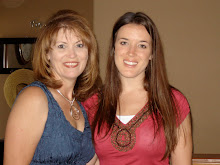.....after the lesson and say, "I didn't know he could do that." And I respond, "I didn't know he couldn't." (p. 53)
I want to be that teacher - the one who doesn't look for faults, but one who looks for growth and possibilities. Why is it we are accustomed to check and look for errors? If we are to encourage life long readers and writers (they truly go hand in hand) then why can't we encourage ourselves to accentuate the positive and raise our expectations for our students. I don't have the magic answer, but this chapter focused on demonstration and shared writing to foster positive writing experiences. I particularly enjoyed reading all the student sample writings.
I'm attempting more "free" writing in our journals, some we can share, and others include a specific language focus ie....underline your topic sentence, circle your fave 5 adjectives, include a figurative language phrase etc....
I'm anxious to read the next chapter "Shared Writing" especially since I'm trying to incorporate more creative and shared writing.
Thursday, January 24, 2008
Subscribe to:
Post Comments (Atom)

2 comments:
Chris,
I have never seen you teach writing, but my impression is that you DO look for the positive things in your students' writing already. Your focus on a skill during free writing is great and very easy to implement. One would think that just having your kids focus on those specific things when writing would improve their overall work. I am interested in seeing if she talks about that later in the book.
Chris,
I really enjoyed reading the sample stories also... Finding the positive in a student's writing certainly is the only way to go to encourage and motivate students as they write throughout the year.
Post a Comment